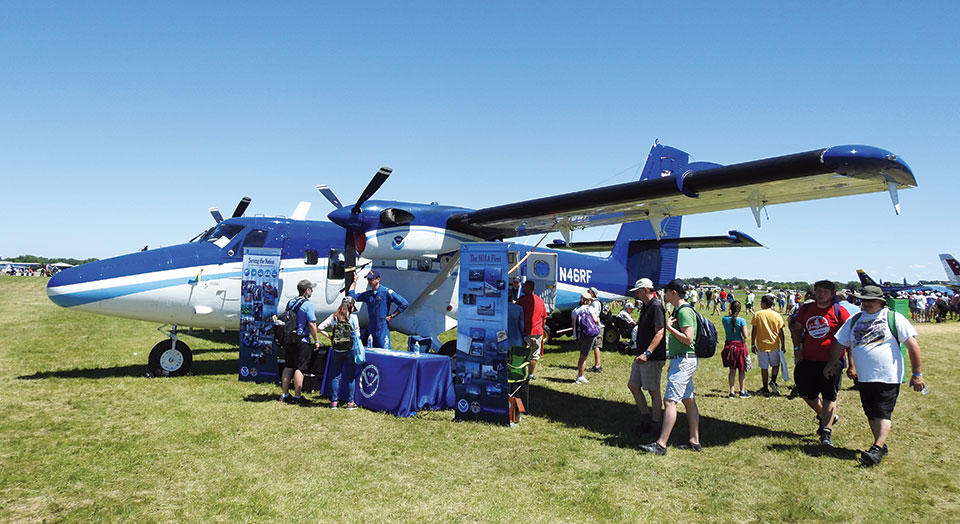NOAA Corps Celebrates 100th Anniversary
July 29, 2017 - The National Oceanic and Atmospheric Administration Commissioned Officer Corps, better known as the NOAA Corps, turned 100 years old on May 22, 2017. The smallest of the seven branches of the United States military, the NOAA Corps resides under NOAA, a scientific agency best known for weather forecasts.
NOAA and the NOAA Corps, both of which are regularly represented at EAA AirVenture Oshkosh, are responsible for more than forecasts. The NOAA Corps uses nine aircraft and 16 ships to accomplish a variety of missions with NOAA.
“NOAA touches everyone’s lives in terms of weather, climate, oceans, and coastal areas,” said Lt. Lindsey Norman. “We actually do a lot more than the weather. NOAA Corps is a group of commissioned officers and our mission is to support NOAA.”
One NOAA airplane, a gorgeous blue-and-white de Havilland DHC-6-300 Twin Otter, graced Oshkosh this year down the flightline past Warbird Alley. EAA AirVenture Oshkosh 2017 attendees were able to walk right up to the Twin Otter and ask NOAA officers questions at a booth under its wing.
NOAA’s weather-related work includes the Airborne Snow and Soil Moisture Survey project, which covers 2,600 flightlines across the northern U.S. and Canada. The branch also conducts coastal mapping surveys that update nautical charts with new depth figures, carries scientific observers to monitor endangered species hundreds of miles off shore, and air chemistry projects like studying the inversion layer in Salt Lake City, Utah.
The most well-known part of NOAA, according to Norman, is the NOAA Hurricane Hunters. As the name implies, Hurricane Hunters fly through, above, and around hurricanes and other storms to gather important data that helps others prepare for the potentially-devastating storms.
The NOAA Corps’ pair of Lockheed WP-3D Orions are heavily equipped and protected — and they have to be. These airplanes fly directly into the eye of hurricanes and collect valuable information in the process. In addition, an NOAA Gulfstream IV-SP flies above the storms, at altitudes between 42,000 and 45,000 feet, to figure out where the hurricanes are headed.
From the daily forecast to mapping out hurricanes’ paths, NOAA and the NOAA Corps does more for the average person than most realize.
“I wish everybody knew about the NOAA Corps,” Norman said. “It’s a great job, and we do a lot of important work.”

